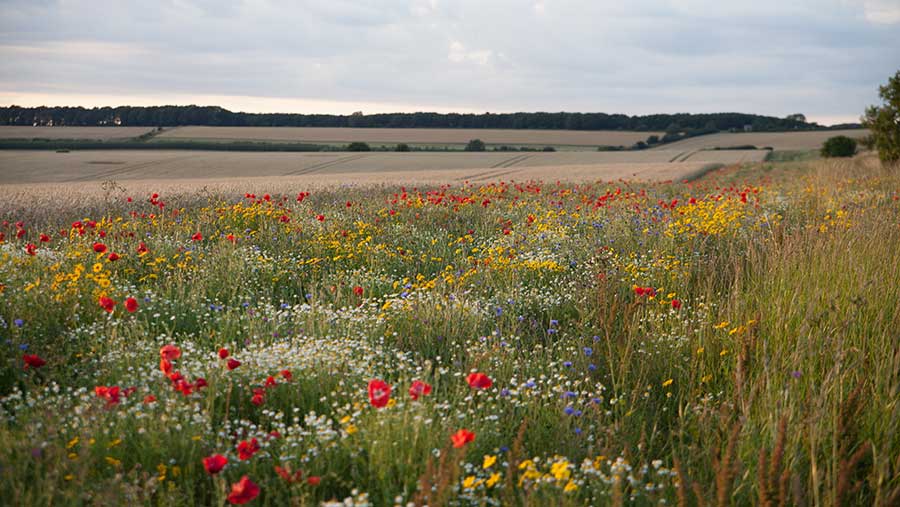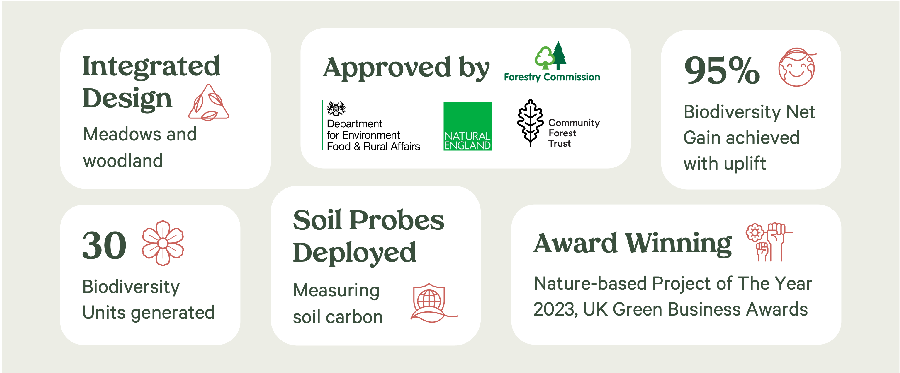Advertiser content
Landowners can earn additional income from optimising land
The origins of an integrated approach
At the time of Wanderlands’ founding in 2019, our research established that marginal land (typically grade 4/5) was unsurprisingly some of the most underused land across England.
It also found that 45% of new forest creation would be monoculture plantations scheduled for felling, the short tenure of which limits the sustainability of biodiversity and carbon capture (Nature Journal, 2019).
Based in the South West, our land enhancement initiatives began in 2020 with a thoughtful, science-based approach to natural capital projects and boosting biodiversity.
At the forefront, our innovative site designs integrate a variety of habitats including broadleaf woodland creation, hedgerow restoration, soil regeneration, and wildflower meadow creation. Complimented by the deployment of modern technology, such as soil probes, to provide constant feedback for our land team to maximise overall project health and success.

Pictured: Nature restoration project on marginal land coexisting with land dedicated to food production
A pioneering example: Winford Rocks
For our most recent project this year, we worked with a private landowner to enhance their 25-acre former landfill site which had predominantly been used for grazing since 2000.
It has now been transformed into a broadleaf woodland, home to circa 10,000 trees of 35 individual species. Supported by restored hedgerows, scrub, and areas of wildflower meadows.
These enhancements have delivered a circa 95% biodiversity net gain (BNG) within Natural England’s Biodiversity Metric 4.0, equating to an uplift of 30 biodiversity units available for sale to developers.
In addition, the project was named a finalist for Nature-Based Project of the Year 2023 by the UK Green Business Awards and has received Defra, Natural England, and Woodland-Carbon-Code approval and endorsement.
We collaborate with foresters, soil scientists, ecologists, and landscape designers to carefully curate natural capital schemes like this.
Always planting a diverse array of native and established broadleaf trees and shrubs that each offer their own measurable ecological benefits to enhance biodiversity and climate resiliency.

Optimising marginal land income in nature markets
What’s more, creating biodiversity-rich projects like Winford Rocks will open new revenue streams in the nature markets outside of typical marginal or pastureland revenues such as grazing.
For instance, the 30 biodiversity units that this site will produce can be sold to developers to help them deliver the new 10% biodiversity net gain required for all new developments. Based on the habitat types and current average market values, we anticipate this to be at a price of £20,000 – £25,000 per unit.
Looking to the future, more opportunities will emerge within the nature markets, such as carbon credits from soil, hedgerows, and agroforestry.
Investment in natural capital projects is in high demand due to rising regulatory requirements being imposed on businesses and developers. Through experience working with these audiences as part of our land consultancy team at Wanderlands, we are excited to be able to help farmers and landowners optimise these new income streams and connect them with future buyers.
In March, the government announced its target to raise at least £500 million in private finance to support nature’s recovery every year by 2027 in England, rising to more than £1 billion per year by 2030.
Now is the time to make a real difference with an integrated, proven approach to optimising marginal land.
Provided by
Wanderlands is an environmental sustainability consultancy working with farmers and landowners to transition towards net zero and optimise marginal land assets that sit outside of land dedicated to food production. Through biodiversity enhancement projects on marginal land, we enable access to lucrative revenue opportunities within the nature markets.
Secure a sustainable future and financial return for your farm enterprise. Visit www.wanderlands.earth/landowners.
